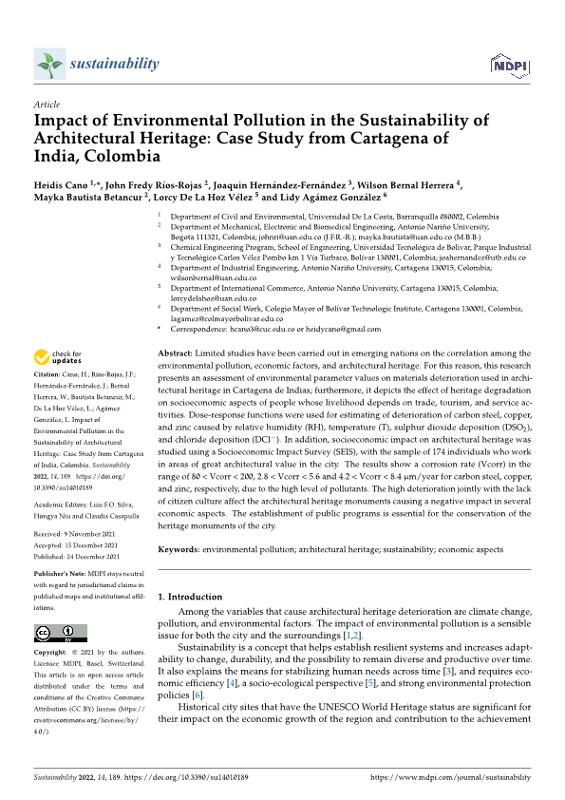Abstract
Limited studies have been carried out in emerging nations on the correlation among the environmental pollution, economic factors, and architectural heritage. For this reason, this research presents an assessment of environmental parameter values on materials deterioration used in architectural heritage in Cartagena de Indias; furthermore, it depicts the effect of heritage degradation on socioeconomic aspects of people whose livelihood depends on trade, tourism, and service activities. Dose-response functions were used for estimating of deterioration of carbon steel, copper, and zinc caused by relative humidity (RH), temperature (T), sulphur dioxide deposition (DSO2), and chloride deposition (DCl−). In addition, socioeconomic impact on architectural heritage was studied using a Socioeconomic Impact Survey (SEIS), with the sample of 174 individuals who work in areas of great architectural value in the city. The results show a corrosion rate (Vcorr) in the range of 80 < Vcorr < 200, 2.8 < Vcorr < 5.6 and 4.2 < Vcorr < 8.4 µm/year for carbon steel, copper, and zinc, respectively, due to the high level of pollutants. The high deterioration jointly with the lack
of citizen culture affect the architectural heritage monuments causing a negative impact in several economic aspects. The establishment of public programs is essential for the conservation of the heritage monuments of the city.














